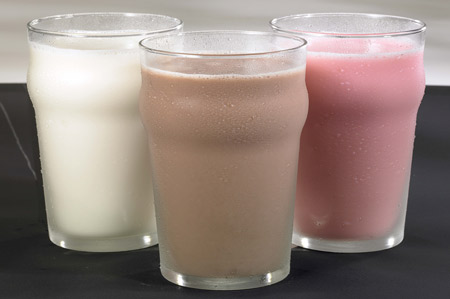Milk Prices May Have Hit Bottom, Fonterra Chief Says
Category: Dairy
 (Wall Street Journal) – New Zealand’s exports and its dairy farmers could be in for some good news. Prices for one of the island nation’s key exports, whole milk powder, could start pushing higher, dairy giant Fonterra Co-Operative Group Ltd.’ s chief executive said.
(Wall Street Journal) – New Zealand’s exports and its dairy farmers could be in for some good news. Prices for one of the island nation’s key exports, whole milk powder, could start pushing higher, dairy giant Fonterra Co-Operative Group Ltd.’ s chief executive said.
Whole milk powder is currently undervalued but prices could increase if China returns to a milk-supply deficit, Theo Spierings told The Wall Street Journal in an interview.
Any increase in dairy prices would be good news for New Zealand, 30% of whose exports are milk related. New Zealand’s agriculture-rich economy has been supported in recent years by surging demand from Asia’s rising middle classes for its dairy exports. Global dairy prices, however, tumbled more than 50% in 2014, hurt by strong global production, high inventories in China and a supply glut caused by Russia’s ban on U.S. and European food imports—including dairy products.
Earlier Wednesday, New Zealand reported a wafer-thin trade surplus for February, partly due to a 36% drop in exports to China as demand for whole milk powder fell. Mr. Spierings said the decline was due to the massive inventory in China and the glut of fresh milk in February in the Asian giant.
“If China goes back to a (milk supply) deficit, then the deficit will immediately be billions of liters and we should see a recovery back to the $3,500 level,” he said.
Whole milk powder prices have shown some signs of recovery in the twice-monthly auctions on GlobalDairyTrade, a benchmark for the global market, but dipped 9.6% to US$2,928 a metric ton in the latest auction.
But Mr. Spierings said he believes whole milk powder prices have likely touched bottom. He said the fresh milk surplus in China has “reversed and we are seeing people going longer, better prices.”
His comments come on a day when New Zealand’s top dairy producer cut its forecast full-year dividend to 20 NZ cents-30 NZ cents a share, from a prior forecast of 25 NZ cents (US$0.15)-35 NZ cents a share. Fonterra also said it would still pay its 10,500 farmer shareholders only $4.70 per kilo of milk solids for the 2014-15 season.
The sharply lower payout has already stripped around NZ$6 billion of farmers’ incomes compared with the prior season and there is growing concern about pressure on the sector. The payout is “well below break-even for many,” said ANZ Bank’s rural economist, Con Williams. Industry body DairyNZ said the low payout “will see many farmers dip into the red this spring.”
The Reserve Bank of New Zealand has flagged dairy sector debt, which has risen around 42% since 2008, as one of the island economy’s biggest risks.
Volatile international dairy prices have also pushed Fonterra’s net profit and revenue lower. Net profit in the six months to Jan. 31 fell 16% from a year earlier to 183 million New Zealand dollars (US$140 million), while revenue fell 14% to NZ$9.7 billion.
“Our half-year results are a snapshot of tough conditions in dairy with variable production, demand and pricing,” said Chairman John Wilson.
“Potentially January and February was the worst period. In my opinion that was the bottom, both in terms of whole milk powder prices as well as Chinese fresh milk prices,” Mr. Spierings said.
Along with possible increased demand from China, Mr. Spierings said he was also seeing increased demand from the Middle East and West Africa. “We see some importing regions coming back,” with the exception of Russia.
However, the end of the European Union milk quota could weigh on prices and is “definitely on my radar,” Mr. Spierings said.
There are fears the global oversupply could worsen in April when the European Union removes a quota on milk, allowing the bloc’s dairy farmers to expand production without purchasing milk quota rights for the first time in 30 years.
While the increasing supply will create pressure on some Fonterra products, he said it was unlikely to “drag the whole milk scene down,” noting that Europe doesn’t focus on whole milk powder as much as on cheese and other dairy products and “the gap in China will always be filled with milk powder.”




